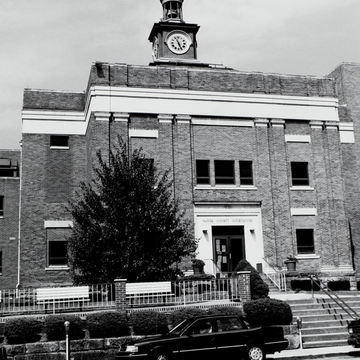The first county courthouse was of log, as were two small clerk's offices nearby. A brick building followed in 1852, and in 1891 a third building was begun from designs by Huntington architect J. B. Stewart. When this courthouse burned a few years later, Frank P. Milburn designed its replacement, a hybrid mix of Dutch and Tudor styles, built of stone and brick. When this fourth building burned in 1921, Milburn's successor firm designed its replacement, the present structure.
This classical revival building is faced with tan tapestry brick. Its three-bay facade is defined by paired pilasters that support a full entablature and solid parapet above. A small clock tower and belfry surmount the partially concealed hipped roof. In the 1970s the courthouse was brutally enlarged with side and rear additions. At the same time, windows of the 1920s building were halved in size to create new floor levels














